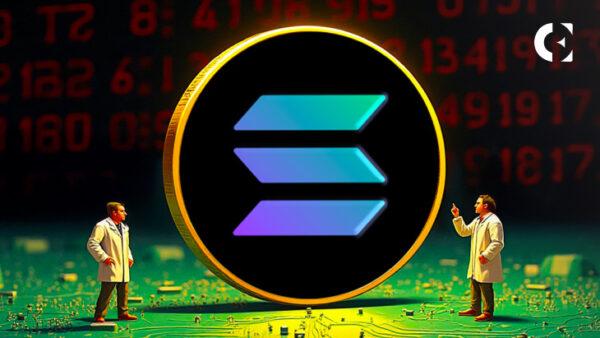The Solana Foundation’s Q2 2025 Network Health Report reveals record-breaking growth in application revenue, validator earnings, and decentralization metrics. This strong fundamental performance, however, contrasts sharply with the recent price action of the native SOL token, which has declined more than 20% over the past 30 days.
The Solana Foundation’s Q2 2025 Network Health Report reveals record-breaking growth in application revenue, validator earnings, and decentralization metrics. This strong fundamental performance, however, contrasts sharply with the recent price action of the native SOL token, which has declined more than 20% over the past 30 days.
This divergence between the network’s underlying health and the token’s market performance presents a complex picture for investors.
According to the Solana Foundation’s Q2 2025 Network Health Report, the blockchain has posted back-to-back quarters of app revenue exceeding $1 billion, solidifying its lead over competitors like Ethereum, Avalanche, and BNB Chain.
While much of the market has cooled, Solana stands out as a thriving ecosystem supported by real-world usage, a growing validator economy, and unmatched developer traction.
According to , the digital asset trades at $140.52, down more than 20% in the past 30 days. SOL is down a massive 3% in the past 24 hours and trades well below the key levels of 20-day and 50-day exponential moving averages.
, Solana outperformed all major Layer 1s by a significant margin. Not only did application revenue increase quarter-over-quarter, it also exceeded the combined total of all other blockchain networks. This activity is directly benefiting validators, who collectively earned $800 million this past quarter.
On January 19 alone, validators pulled in $56.9 million, a daily record for the network. Validator cost efficiency has also improved dramatically: while in 2022 validators needed to stake 50,000 SOL to break even, they now only need 16,000 SOL, reflecting rising returns and declining operational overhead.
Solana’s Nakamoto Coefficient, a key metric used to measure decentralization, has climbed to 20, surpassing Ethereum’s score of 6. A higher coefficient implies greater resistance to collusion and censorship, signaling robust decentralization.
Geographically, Solana validators are impressively distributed. Germany leads with 23.55% of the total stake, followed by the United States (17.37%) and the Netherlands (14.36%), with no single country or data center controlling more than one-third of the network.
In 2024 alone, Solana onboarded 7,625 developers, more than any other blockchain. This bodes well for future application growth and innovation.
While the fundamentals are soaring, SOL’s weekly chart paints a more cautious picture. After failing to hold the 0.236 Fibonacci level at $155.58, the price has retracted back to around $140.46, losing over 8% this week.
Key levels to watch include $155.58 (0.236 Fib) and $183.69 (0.382 Fib), which is the next major bullish target if SOL reclaims $155.
On the other hand, the MACD has crossed bearish with momentum waning while the RSI sits at 44.27, entering neutral-to-weak territory, suggesting more room for downside before an oversold bounce.
